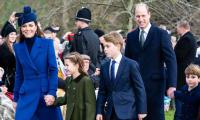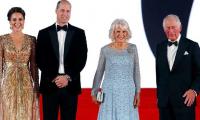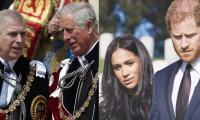KABUL: The aging Ariana Afghan Airlines Boeing 727 took off from Islamabad with about 10 passengers, myself included, huddled near the exits, bound for war-torn Kabul months after the 2001 fall of the Taliban.
The Afghan capital had been consigned to rubble by rocket-propelled grenades and artillery fire, first in fighting between mujahideen warriors and the Soviets after their invasion in 1979, and then between different mujahideen factions.
The airport was fringed with burnt-out fighter planes and scores of people, a skewer in each hand, scouring the tarmac for landmines. Someone put a ladder up against the fuselage, opened a flap, poured in some liquid and threw the empty can over his shoulder. Fast forward 16 years, or four World Cups. I fly in from Dubai, sipping red wine as we descend into Kabul, a city transformed from rubble into a bustling capital, though still visibly plagued by the escalating war with Taliban insurgents. The centre of the city is a heavily protected zone of concrete fortresses, razor wire and well-protected checkpoints. The ruins of an office building near the presidential palace bear witness to a massive bomb last year that killed 150 people. But in other areas, such as in the west of the city, shining blocks of flats have replaced the debris, behind lines of stalls and shops selling fresh vegetables, smart phones, fashion and kitchenware and the all-important building materials.
The memory of women bowed by the all-enveloping burqa, enforced under Taliban rule, trudging past destroyed homes is also fading amid talk of possible further Taliban ceasefires, upcoming elections, the national cricket team´s first “test” match against India - and the World Cup. “The city has been transformed,” said Omaid Sharifi, co-founder of ArtLords, a group promoting Afghan culture that is best known for painting murals on the city’s many concrete blast walls. “On the street, boys and girls are walking together. … There is art, culture and music. People are contributing. People are being more kind. “
The heavy security presence across Kabul underscores the danger that continues to face the city, where hundreds of civilians have been killed and wounded in attacks this year and where regular blackouts and flooding make life a misery for many. But amid the danger, prosperity has improved for fortunate members of Kabul´s middle class, which grew up on the flood of money that came into the city following the US -led campaign that overthrew the Taliban in 2001.
The World Meteorological Organisation flag. — AFP FileGENEVA: Global temperatures hit record highs last year, and...
This image shows the outside view of the U.S. Senate. — AFP/FileWASHINGTON: Billions of dollars in foreign aid for...
Each year, many African migrants brave the perilous “Eastern Route” across the Red Sea and through war-scarred...
State Department US building can be seen in this picture. — AFP/FileWASHINGTON: The U.S. State Department’s annual...
Former US president Donald Trump. — AFP/FileNEW YORK: The judge overseeing Donald Trump’s criminal hush money...
Abortion-rights activists hold a protest on in Phoenix, USA. — AFP/File WASHINGTON: The idea of a doctor in the...







